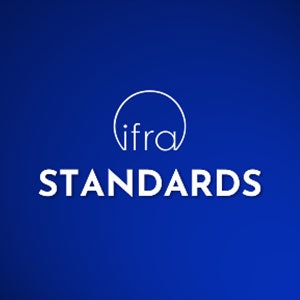
On January 15, 2020, IFRA held a webinar to review the changes entailed in the new 49th Amendment. The webinar was hosted by David O’Leary, and the presentation was delivered by IFRA scientific director, Matthias Vey.
 Vey began with an overview of the process of setting IFRA Standards. The initial step in the process is the submission of fragrance ingredient information regarding use and exposure, chemical makeup and potential use by IFRA members. This information is sent to the Research Institute for Fragrance Materials (RIFM), which then combines it with toxicological data to organize a safety report. An expert panel reviews this information to evaluate the reported exposure, and IFRA is informed if the levels are not supported by current standards. IFRA determines what changes need to occur in order to mitigate or eliminate the risks and concerns surrounding the ingredient in question. It is at this stage that the revised or new standard is created. The changes are then discussed with the IFRA board and community of stakeholders before the final standard is published by IFRA.
Vey began with an overview of the process of setting IFRA Standards. The initial step in the process is the submission of fragrance ingredient information regarding use and exposure, chemical makeup and potential use by IFRA members. This information is sent to the Research Institute for Fragrance Materials (RIFM), which then combines it with toxicological data to organize a safety report. An expert panel reviews this information to evaluate the reported exposure, and IFRA is informed if the levels are not supported by current standards. IFRA determines what changes need to occur in order to mitigate or eliminate the risks and concerns surrounding the ingredient in question. It is at this stage that the revised or new standard is created. The changes are then discussed with the IFRA board and community of stakeholders before the final standard is published by IFRA.The standards exist in order to establish safe levels of use for fragrance ingredients as determined by the RIFM safety assessments. The assessment currently covers approximately 3,000 distinct materials, with close to 900 of those being natural complex substances (NCS), which make up the IFRA transparency list. However, RIFM does not assess a group of approximately 450 functional materials, which includes preservatives, solvents and colorants. The release of the 49th Amendment means many of the previous standards have been updated with a total of 91 revisions and 25 new entries. The large number of standard changes were also accompanied by a new categorization system for products and a new evaluation method for establishing suitable exposure levels.
Some of the major differences between the 48th Amendment and the new 49th Amendment include the addition of a new category of dermal sensitization, new RIFM safety assessment protocols and new subcategorizations for systemic toxicity and phototoxicity within IFRA categories. These new subcategories bring further distinction to these categories including the separation of rinse-off and leave-on products, those with and without the likelihood of UV exposure and products intended for ingestion — which IFRA does not report on — versus those which are not intended for ingestion but hold a significant likelihood of ingestion.
Due to the extensive nature of revisions and additions to the 49th Amendment, IFRA has implemented an extended timeline to assure participating product developers have adequate time to make the necessary adjustments to the levels of regulated ingredient products. With the release of the new standards on January 10, 2020, product developers have over two years to reformulate and redistribute their products by the final deadline on February 10, 2022. New creation enforcement will begin on February 10, 2021 for all new products coming to market after August 10, 2020.
Additionally, IFRA has created tiered levels which enable users of different education and exposure backgrounds to access information worded to a level which ensures understanding. These levels include expert, which includes the full presentation of data and technical details in scientific language; engaged, which provides a significant level of detail while utilizing a more informal and simplified language to allow for a wider understanding amongst industry members that are not scientists; and public for those with little industry knowledge to gain an understanding of the overall intention of the process and the result information that is most pertinent to them.
More on the 49th Amendment and the new standards will be discussed at IFRA’s Global Fragrance Summit in Singapore, to be held April 1-2, 2020.










